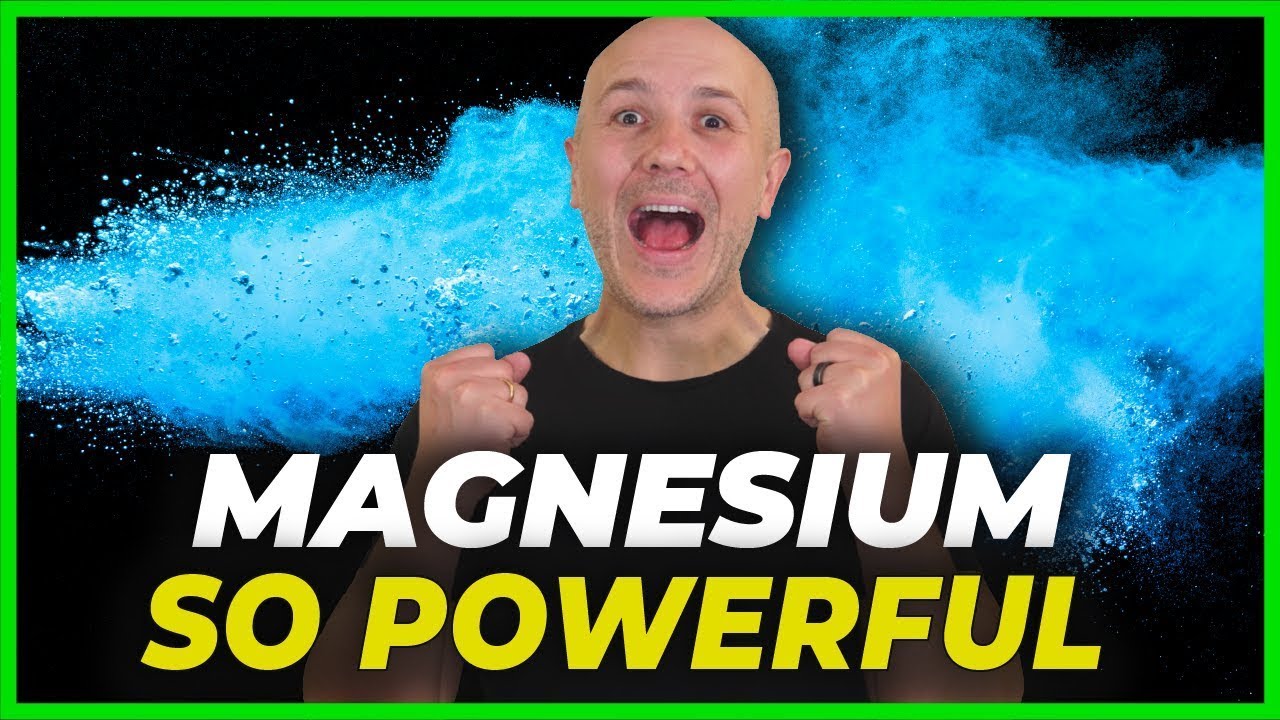Is This Why You’re Stressed or Not Sleeping?
Summary
TLDRThis video script addresses the widespread yet underdiagnosed issue of magnesium deficiency, affecting up to 88% of the population. It explains the difficulty in testing for this deficiency and the limitations of blood tests due to magnesium's distribution in the body. The script suggests cross-referencing symptoms, diet, and certain health conditions to identify potential deficiencies. It highlights foods rich in magnesium and emphasizes the importance of both diet and supplementation, recommending magnesium glycinate as a supplement. The video also discusses the long-term commitment needed to correct a chronic deficiency, which can take over a year, and stresses the need to maintain adequate magnesium intake for overall health.
Takeaways
- 😖 Reversing magnesium deficiency is a challenging task.
- 🔍 There's no gold standard for testing magnesium levels, making it hard to diagnose.
- 📊 Up to 88% of the general public may be low in magnesium.
- 🦴 60% of magnesium is stored in bones, 39% in soft tissues, and only 1% in blood.
- 🩺 Blood tests may not accurately reflect magnesium levels unless the deficiency is severe.
- 🌱 Magnesium is primarily intracellular, meaning it's mostly found inside cells.
- 📚 The principle of cross-referencing data can help identify a magnesium deficiency.
- 🍽 Foods rich in magnesium include nuts, nutritional yeast, leafy greens, and dark chocolate.
- 💊 Supplementing with magnesium glycinate is recommended for stress and sleep issues.
- 🕰️ It can take up to a year or more to correct a chronic magnesium deficiency.
- 📈 The average person consumes far less magnesium than the recommended daily allowance (RDA).
Q & A
Why is it difficult to reverse a magnesium deficiency?
-Reversing a magnesium deficiency is difficult because it is hard to test for it accurately, and many people are unaware they have it. Additionally, magnesium is stored primarily in bones and soft tissues, making blood tests ineffective unless the deficiency is severe.
How common is magnesium deficiency in the general population?
-Magnesium deficiency is quite common, with some reports indicating that up to 88% of the general population may be low in magnesium.
Why are blood tests not reliable for detecting magnesium deficiency?
-Blood tests are not reliable for detecting magnesium deficiency because only 1% of the body's magnesium is in the blood. The majority is in bones and soft tissues, and the body can borrow magnesium from these sources, making blood levels appear normal even when overall magnesium is low.
What are some symptoms of magnesium deficiency?
-Symptoms of magnesium deficiency include muscle twitching, muscle tightness, insomnia, anxiety, fatigue, nystagmus (rapid eye movement), migraines, kidney stones, and pathogenic calcification (calcium buildup in inappropriate places).
How can certain lifestyle factors and conditions increase the risk of magnesium deficiency?
-Factors such as gut inflammation, diabetes, insulin resistance, high sugar intake, high vitamin D intake, and the use of certain medications (like PPIs, antibiotics, and diuretics) can increase the risk of magnesium deficiency by increasing the body's need for magnesium or reducing its absorption.
What are some foods high in magnesium?
-Foods high in magnesium include kelp (760 mg per 100 g), almonds (490 mg per 100 g), nutritional yeast (231 mg per 100 g), leafy greens (about 100 mg per 100 g), dark chocolate (165 mg per 100 g), and pumpkin seeds (265 mg per 100 g). Meats and fish contain lower amounts, between 25 to 35 mg per 100 g.
Why might modern diets be insufficient in providing adequate magnesium?
-Modern diets might be insufficient in magnesium due to the depletion of minerals in the soil where food is grown, leading to lower magnesium content in foods.
What is the recommended daily intake of magnesium, and how does it compare to the average intake?
-The recommended daily intake (RDA) of magnesium is between 300 and 420 mg per day, while the average person only consumes about 25 mg per day from their diet.
What type of magnesium supplement is recommended, and how much should be taken?
-Magnesium glycinate is recommended for its benefits in reducing stress and improving sleep. An intake of about 800 mg per day, usually split into doses of 300-400 mg per tablet, is suggested.
How long might it take to correct a chronic magnesium deficiency?
-Correcting a chronic magnesium deficiency can take up to a year or more. While symptoms may improve within weeks or months, it is recommended to continue supplementation for an extended period to fully address the deficiency.
Outlines

This section is available to paid users only. Please upgrade to access this part.
Upgrade NowMindmap

This section is available to paid users only. Please upgrade to access this part.
Upgrade NowKeywords

This section is available to paid users only. Please upgrade to access this part.
Upgrade NowHighlights

This section is available to paid users only. Please upgrade to access this part.
Upgrade NowTranscripts

This section is available to paid users only. Please upgrade to access this part.
Upgrade NowBrowse More Related Video

I Started Consuming Magnesium And I Never Regret It! 80% Of The People Are Low In Magnesium!

How to eliminate migraines and headaches in less than a week

Vegetarians, watch this: The Science of Vitamin B12

You Will Never Get High Blood Pressure after Watching This Video

Should You Be Assessed For ADHD? Psychiatrist, Dr Stephen Humphries - Harley Therapy

The Big Magnesium MISTAKE 50%+ People Are Making
5.0 / 5 (0 votes)